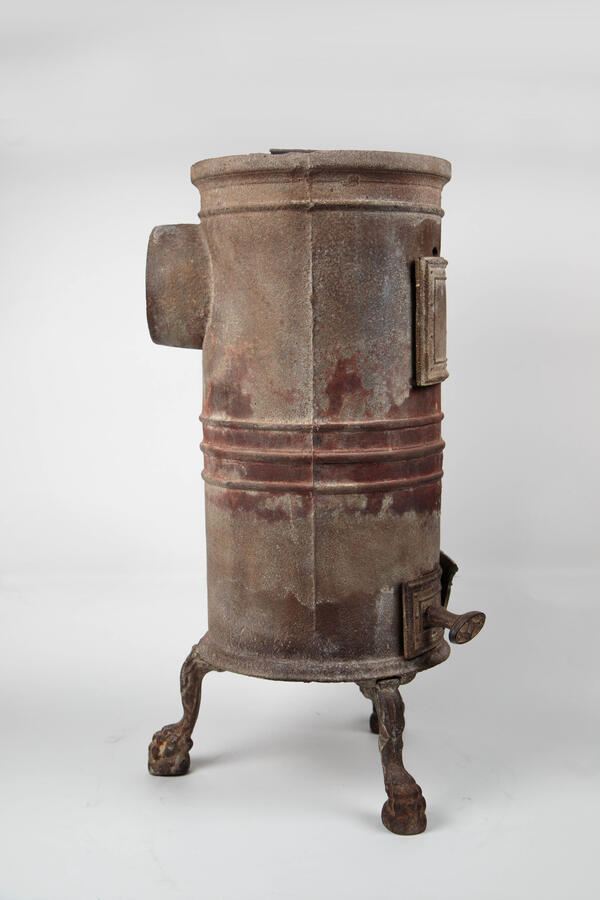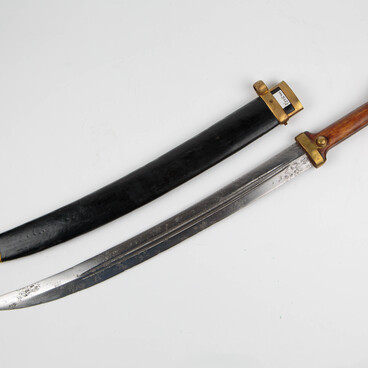The museum’s collection includes a potbelly stove. In the 20th century, this device replaced fireplaces. People used it to heat rooms and cook food. This was one of the simplest heating devices, however, it offered poor fire resistance due to its instability.
This unit was created by heating engineers, who, firstly, took into account the models of oven masters, and secondly, sought to create an economical device: during the times of military communism, fuel was in short supply.
Small potbelly stoves usually had a cylindrical shape, three or four legs, a cooking hole, a firebox with a fire door and a protruding handle, a door for an ash pan, sometimes an opening for circulating air, and a hole for the chimney. A grate was installed inside the stove, on which solid fuel was laid. Often such stoves were made of cast iron. Information about the manufacturer was usually placed in the central part.
In the early years of the New Economic Policy, these stoves continued to spread throughout the country. At the same time, the authorities began allotting land to city dwellers for building dachas (country houses). Thus, a small-sized and unpretentious potbelly stove became a necessary item.
Cast-iron stoves were also mass-produced for the needs of the Red Army. Soviet soldiers used them extensively during the Great Patriotic War. They were installed in dugouts — underground fortifications — and heated freight cars. They were necessary in besieged Leningrad and in any city when after bombings the lights and heating were turned off.
Some models of stoves were artistically decorated with exquisite cast elements and openwork forging; the museum’s exhibit has rather unusual legs. Often such stoves were sold abroad in batches. Outside the USSR, potbelly stoves became popular in the USA, Japan, and Finland.
Nowadays, potbelly stoves are made in Russia,
Sweden, Finland, and Canada. The design of such stoves has changed. It is still
the same metal or cast-iron stove, as it was decades ago, but some models do
not have legs at all: they are designed to be suspended. In addition, many
modern stoves are more richly decorated.




